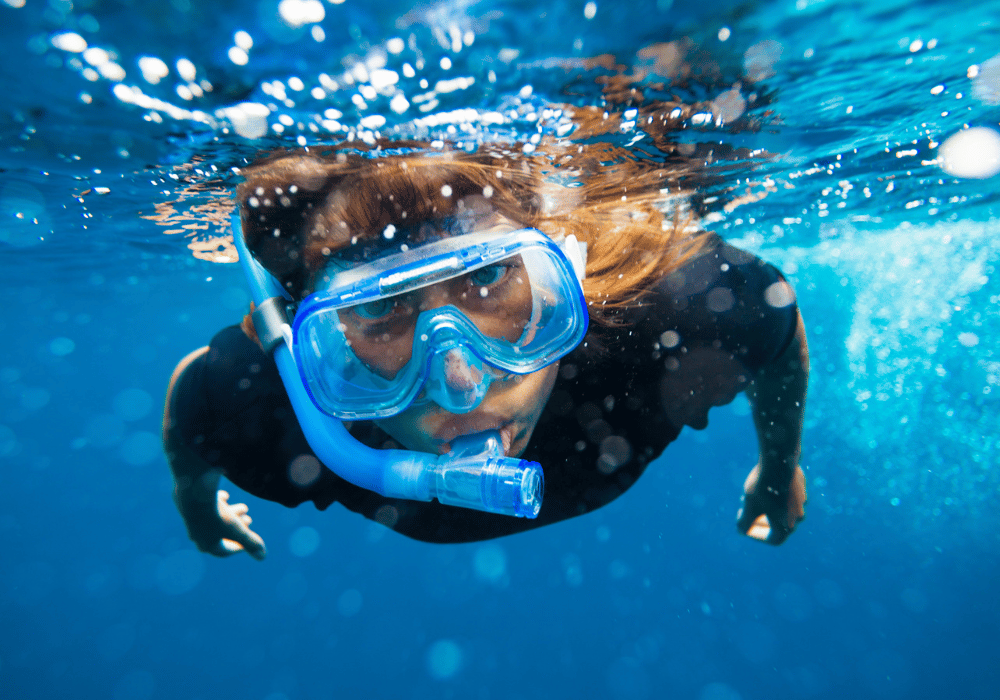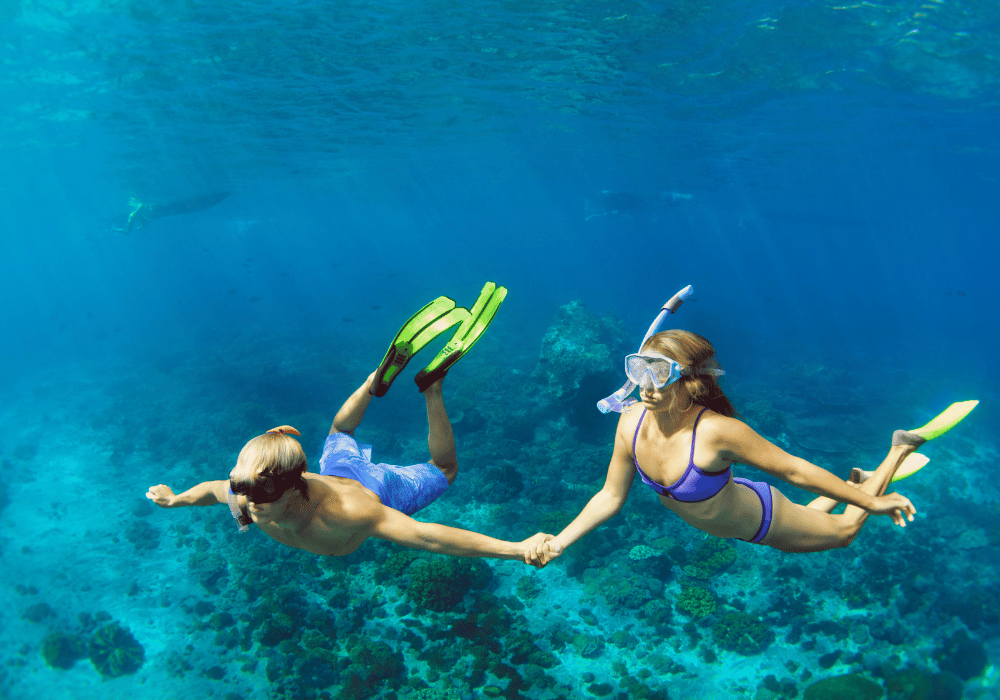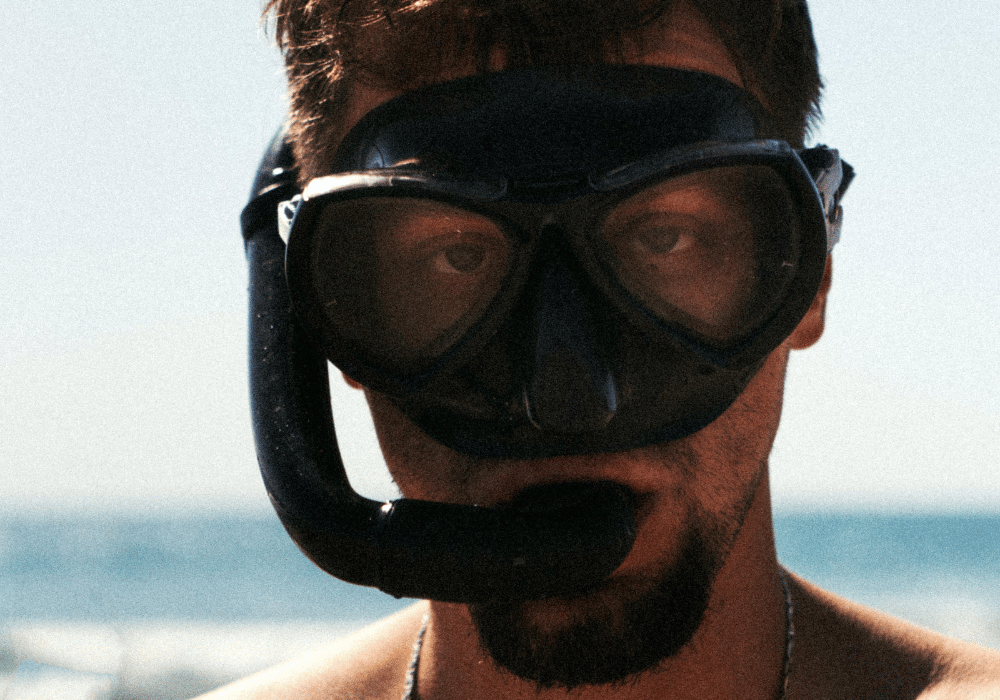Shop Online

Whether you’re gearing up for your first snorkelling adventure or you’re a seasoned diver looking to upgrade your equipment, choosing the right snorkel can make or break your underwater experience. A good snorkel is more than just a simple tube—it’s your lifeline to the surface, your window to extended underwater observation, and an essential piece of safety equipment that deserves careful consideration.
Many divers underestimate the importance of a quality snorkel, focusing instead on masks, fins, or regulators. However, the right snorkel can significantly enhance your diving experience, from surface swimming to safety stops, and even emergencies. This comprehensive guide will help you understand the different types of snorkels available, what features to look for, and how to use them effectively, whether you’re just starting your underwater journey or looking to refine your technique.

The traditional J-shaped snorkel is the simplest and most reliable design available. These snorkels feature a basic tube with a mouthpiece and are favoured by many experienced divers for their straightforward functionality. Classic snorkels are lightweight, easy to clear, and have fewer components that could potentially fail. They’re particularly popular among technical divers and those who prefer minimalist gear setups. The main advantage of classic snorkels is their simplicity. With no moving parts or complex mechanisms, they’re virtually maintenance-free and highly reliable. They’re also typically the most affordable option, making them perfect for beginners who want to try different styles before investing in more expensive models.
Semi-dry snorkels feature a splash guard at the top that helps reduce water entry when waves wash over the tube. This design is particularly useful for snorkelling in choppy conditions or when surface swimming between dive sites. The splash guard doesn’t completely prevent water entry, but it significantly reduces the amount that gets in during normal use. These snorkels strike a balance between simplicity and functionality. They offer better performance than classic designs in rough water conditions while maintaining the reliability that comes with fewer moving parts. The splash guard is usually a fixed design, so there’s nothing to break or malfunction.
Dry snorkels incorporate a valve mechanism at the top that seals when the snorkel is submerged, preventing water from entering the tube. When you surface, the valve opens automatically, allowing normal breathing. This technology is particularly appealing to beginners who are still developing their clearing techniques or those who frequently snorkel in areas with significant wave action. The main advantage of dry snorkels is the reduced need for clearing water from the tube. However, these designs are more complex and have additional components that could potentially malfunction. Some experienced divers find the valve mechanism restrictive during rapid breathing or prefer the direct airflow of simpler designs.
Many modern snorkels include a purge valve at the bottom of the tube, near the mouthpiece. This one-way valve allows water to be expelled from the snorkel without the need for forceful clearing. Simply exhale gently, and the valve opens to release any water that has accumulated in the tube. Purge valves are particularly helpful for beginners who are still mastering clearing techniques or for anyone who wants to conserve energy during long snorkelling sessions. However, like any mechanical component, purge valves require proper maintenance and can occasionally fail or become clogged with sand or debris.
A flexible section between the main tube and mouthpiece allows the snorkel to move with your head position, reducing jaw fatigue and providing a more comfortable fit. This flexibility also helps prevent the snorkel from being knocked out of position by waves or movement. The flexible section is particularly valuable for divers who spend extended periods at the surface or those who frequently change head positions while observing marine life. It reduces strain on the jaw muscles and creates a more natural feel during use.
The mouthpiece is your primary point of contact with the snorkel, so comfort is crucial. High-quality snorkels feature soft, durable silicone mouthpieces that resist degradation from saltwater and UV exposure. The mouthpiece should feel comfortable in your mouth without requiring excessive bite force to maintain position. Look for mouthpieces with proper bite tabs and lip seals that create a comfortable, secure fit. Some manufacturers offer different mouthpiece sizes or styles to accommodate different preferences and mouth shapes.
New snorkelers should consider starting with a classic or semi-dry snorkel before moving to more complex designs. Simple snorkels help you develop proper breathing techniques and clearing skills without relying on mechanical aids. Once you’re comfortable with basic snorkelling skills, you can explore more advanced features. Learning with a basic snorkel also helps you understand what features you actually need versus what might be marketing hype. Many experienced snorkelers and divers eventually return to simpler designs after trying various complex options.
Regardless of which type of snorkel you choose, learning proper clearing techniques is essential. The most common method is the blast clear, where you forcefully exhale to expel water from the tube. Practice this technique in shallow water until it becomes second nature. Another useful technique is the displacement method, where you tilt your head back while ascending, allowing air expansion to push water out of the bottom of the snorkel. This method is particularly useful when using snorkels without purge valves.
Beginners often breathe too rapidly or forcefully through their snorkel, which can cause CO2 buildup or hyperventilation. Practice slow, deep breathing patterns that maximize oxygen exchange while minimizing effort. Remember that the snorkel tube creates additional dead air space, so breathing should be deliberate and controlled.

Experienced divers should choose snorkels based on their primary diving activities. Technical divers might prefer simple, streamlined designs that fold flat against the mask strap. Underwater photographers might want snorkels with excellent clearing capabilities for frequent surface intervals. Dive guides and instructors might benefit from dry snorkels that reduce the need for clearing during surface instruction. Think about the typical conditions where you dive. If you frequently dive in rough water or from small boats, features like dry tops or large bore tubes might be beneficial. For calm water diving or pool training, simpler designs often work better.
Quality snorkels require minimal maintenance but benefit from proper care. Rinse thoroughly with fresh water after each use, paying particular attention to purge valves and any moving parts. Periodically inspect the mouthpiece for signs of wear or degradation, as deteriorating silicone can harbour bacteria. Store your snorkel in a way that prevents the tube from being bent or crushed. Many divers use mask boxes or dedicated gear bags that provide protection during transport and storage.
Consider how your snorkel integrates with your mask and other equipment. Some snorkels attach more securely to certain mask strap designs. If you wear a hood regularly, ensure your chosen snorkel accommodates the additional bulk around your head. For technical diving, consider how your snorkel affects your overall profile in the water and whether it might interfere with other equipment or emergency procedures.
Choosing the right snorkel depends on your experience level, diving style, and personal preferences. Beginners should prioritize comfort and simplicity, while experienced divers can focus on features that enhance their specific diving activities. Consider trying different styles before making a purchase, as personal preference plays a significant role in snorkel selection. What works well for one diver might be uncomfortable for another, even with similar experience levels.
At Benthic Scuba, we carry a comprehensive selection of high-quality snorkels from leading manufacturers, ensuring you can find the perfect match for your diving needs. Our experienced staff can help you navigate the various options and find a snorkel that enhances your underwater adventures.
Whether you’re just starting your diving journey or looking to upgrade your current gear, choosing the right snorkel is an investment in safer, more enjoyable diving experiences. Explore our snorkels to see our full selection, or reach out today to speak with our gear specialists about finding the perfect snorkel for your diving style.
